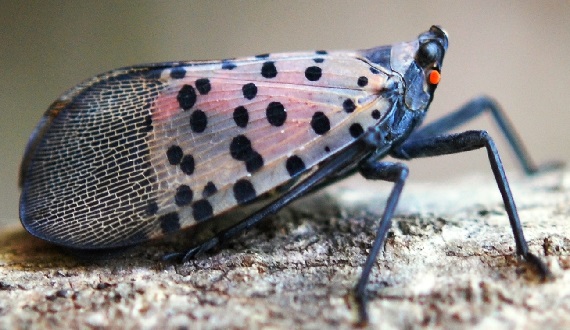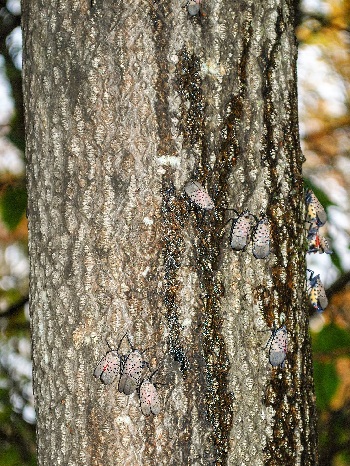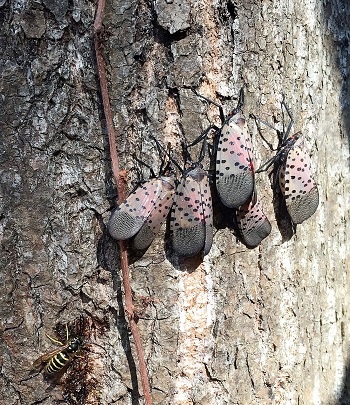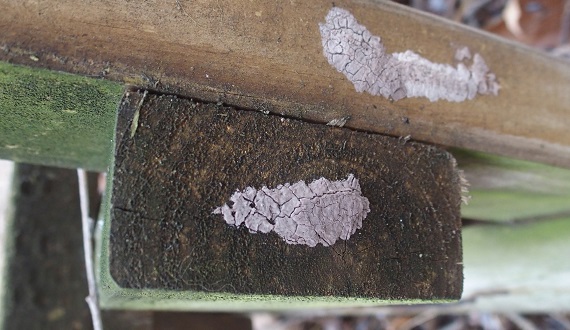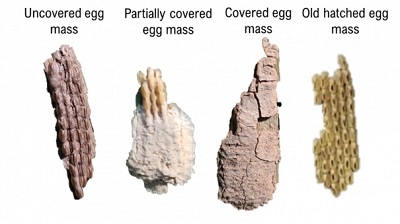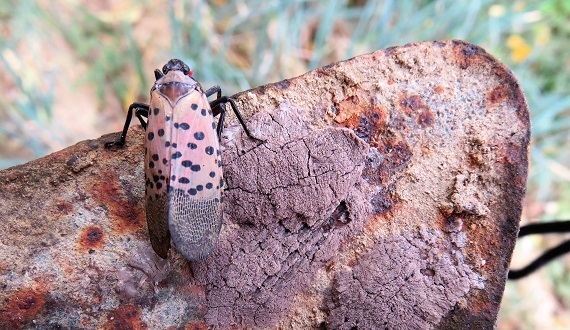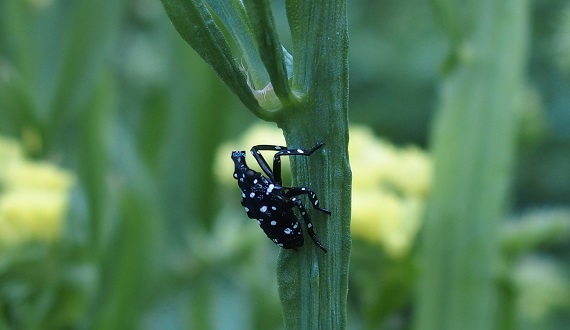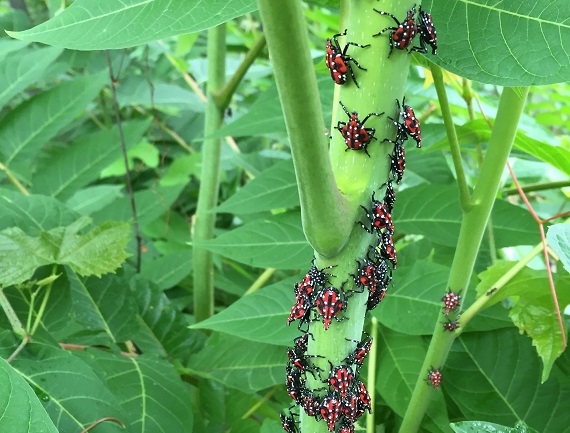What is the Concern?
Spotted Lanternfly
Spotted lanternfly (Lycorma delicatula) is an invasive sap-feeding insect from Asia that was first found in the United States in 2014, in Pennsylvania. This non-native pest is known to feed on a wide variety of fruit, ornamentals, and woody trees. Tree-of-heaven, another invasive species, is a favored host to the spotted lanternfly. Other preferred plants include grapes, hops, and the following trees: almond, apple, apricot, cherry, maple, nectarine, oak, peach, pine, plum, poplar, sycamore, walnut, and willow.
